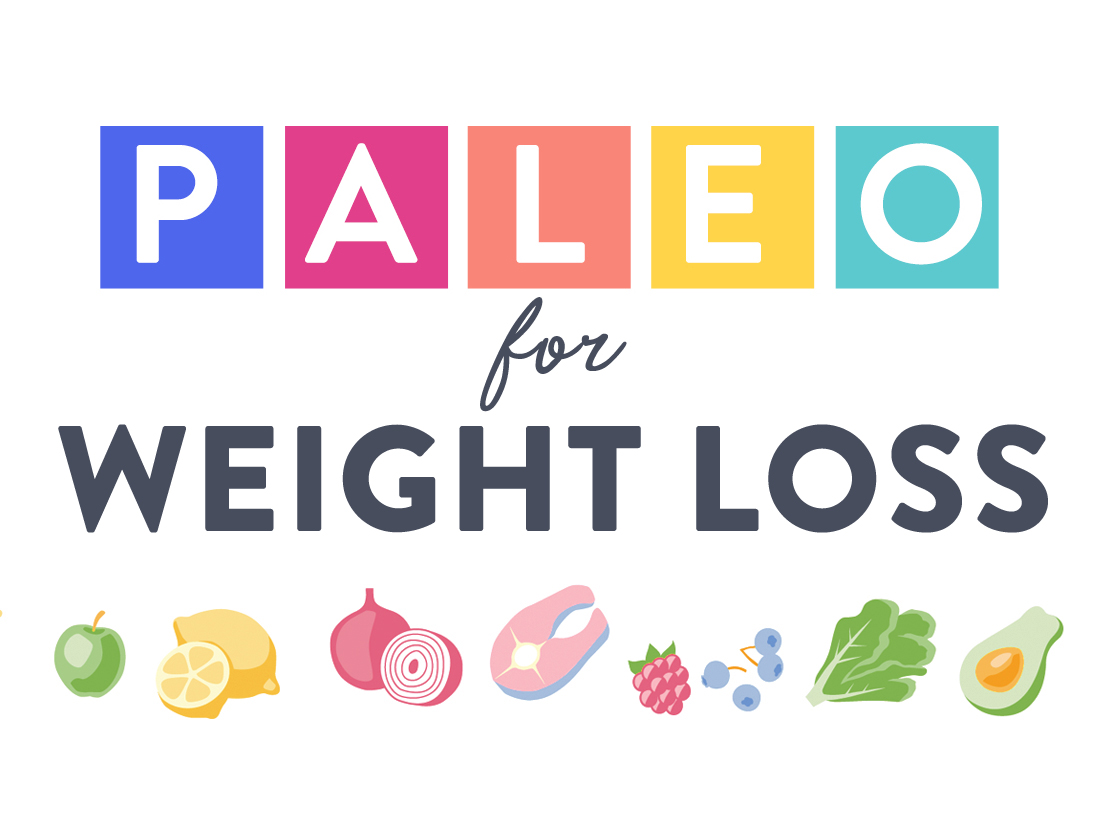Dr. Sarah Ballantyne PhD., a medical biophysicist from the University of Western Ontario explains how the Paleo diet helps with weight loss.
Paleo for Weight Loss ~ The Paleo Mom
An estimated 213 million Americans (69% of the population) are overweight with 111 million (36%) being obese. Because being overweight increases the risk of developing many other chronic health problems—including type 2 diabetes, heart disease, cancer, polycystic ovary syndrome (PCOS), infertility, pregnancy complications, gout, arthritis, erectile dysfunction, high blood pressure and high cholesterol—achieving a healthy weight is one of the most important things that we can do to improve our long-term health.
Studies show that the Paleo diet is effective for healthy weight loss with concurrent reductions in total fat mass, liver fat, belly fat, BMI, waist circumference, and hip-to-waist ratio. And this weight loss success occurs with study participants eating as much as they want! In fact, Paleo beats out government dietary guidelines, weight control diets, and diabetes diets in terms of weight loss. Studies also go a long way to explaining why: the Paleo diet provides higher satiety per energy per meal, meaning we feel fuller after consuming fewer calories. One study in men showed that participants reduced their caloric intake by about 400 calories per day without trying, and another study in postmenopausal women showed that participants reduced their caloric intake by 25%, also without trying! Multiple studies show that the Paleo diet reduces leptin levels, which might explain why Paleo meals are so filling, including showing that leptin reductions from Paleo are greater than those from following a Mediterranean diet. See Paleo Diet Clinical Trials and Studies
Thanks to the Paleo diet’s focus on consuming nutrient-dense, satiating foods (along with removing many hunger-stimulating foods, like refined grains and sugars), many people lose weight when they first adopt the Paleo framework—even if they’re not trying! The elimination of Standard American Diet (SAD) staples, along with an increase in bulky plant foods that are high in fiber and water, generally results in a spontaneous decreased caloric intake and a subsequent reduction in body fat.
Smart Goal Setting for Weight Loss
I hear from many people who are frustrated that they can’t lose those last 10 pounds. But the scientific evidence suggests that throwing all of our effort into maximal leanness might not be the best idea. There might even be protective effects for people with a little more adipose [fat] tissue! So, smart goal setting becomes step 1 in any healthy weight loss journey.
This topic is discussed in detail in Healthy Weight Loss with Paleo, Part 4: Using the Obesity Paradox to Inform Our Goals. However, the take home message is that, when goal setting, it’s important to set goals related to body composition rather than an absolute weight on the scale.
While this is still a field of science in which new papers are released daily that add to our understanding, there seems to be strong evidence that aiming to have a body fat percentage in the higher end of the normal range is best of overall lifelong health.
You can calculate what that means for you using the following formula:
Body fat % = (1.39 x BMI) + (0.16 x age) – (10.34 x gender) – 9
with gender equal to 1 for men and 0 for women. Although, this still represents a best guess based on current evidence, calculate your lower body fat percentage target with a BMI of 22 and your upper limit with a BMI of 25.
For a 35-year old woman, this translates to a body fat percentage between 27% and 31%.
At-home scales that measure bioelectrical impedance aren’t quite as accurate as what professionals use, but a much better investment than a regular bathroom scale for daily or weekly monitoring. Remember that your weight and body composition aren’t the only metrics of health. And of course, the advice of your healthcare provider always trumps this type of information.
The Weight Loss Magic Bullet: Portion Control
Portion control is the driving force behind every successful weight-loss diet, whether it be low-carb, Paleo, the Mediterranean diet, the DASH diet, Weight Watchers, or any number of short-lived fads. No matter what a diet’s official rationale is, it induces weight loss chiefly by reducing the number of calories consumed. Different diets go about this in different ways, but energy intake is what ultimately ends up changing the number on the scale.
A large body of scientific literature confirms this concept. When calorie intake is held constant, different macronutrient ratios (such as low-carb/high-fat or high-carb/low-fat) don’t have significantly different effects on the amount of body fat lost (or on overall energy needs). There’s no substantial evidence to support that specific macronutrient ratios have a “metabolic advantage” when it comes to burning more fat or changing energy needs; the only thing that ends up influencing body mass is the calorie content of our diet. For example, a metabolic ward study from 1992 in which subjects were fed tightly controlled diets with equal calorie contents found no detectable difference in the amount of energy people burned when eating an extremely high-fat, low-carb diet (70% fat and 15% carbohydrate) versus an extremely low-fat, high-carb diet (0% fat and 85% carbohydrate). Another metabolic ward study found that when hypercaloric diets with different macronutrient ratios were compared, calories alone accounted for body fat gain.










